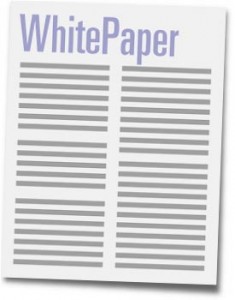
People sometimes ask us what is a white paper? But what they’re really asking, is what makes a great digital white paper, special report, guidebook, or handbook… depending on what they call them.
If you are new to digital publishing, do some split tests to discover which label—white paper, special report, handbook or guidebook—your consumers prefer… let them vote with their wallets in a clean test…. you will likely be surprised by the results.
What should the covers look like? How should the page layout be designed? How long should it be? Should it be a PDF? HTML? Both? Is there a template to follow? How should it be written?
At its core, a good white paper is an adult education product designed for a motivated learner who is looking for a thorough, well researched, in-depth answer to a specific question or concern. You may find them called white papers and special reports more often in B2B, and they may be called handbooks and guidebooks in B2C.
[text_ad]
What is a white paper?
First, at 60–80 pages, on average, they are the perfect length. They are long enough to be in-depth and credible on a single topic, while remaining much shorter than a book. Ideally, white papers are 24,000 to 32,000 words vs. 70,000 to 90,000 words for a bookstore book.
Second, depending on the topic, they can be heavily illustrated with line drawings, charts, and tables — all designed to enhance understanding.
Third, the graphic design and layout are clean, stark, and pristine with an “academic” feel. A white paper is — wait for it — white. It doesn’t need to be four-color, flashy, or overly designed. At some primal level of consciousness, its austere “look and feel” adds to a white paper’s authority. The medium never overwhelms the message.
Fourth, in order to be consumer-friendly, the finished document is designed to be printed on 8½” x 11” paper. In the digital age, many consumers want to be able to buy a white paper, download it immediately, and maybe print it out on their own computer printer. Our research shows that at 60-80 pages, most consumers — regardless of age — choose to print them out rather than read them on a computer screen.
Consumers prefer holding the physical copy of the white paper to read and perhaps to mark up with pen or pencil. At the same time, they appreciate that the PDF file is saved to their computer hard drive for reprinting, if necessary.
Additionally, we suggest creating an HTML version that makes it easy to read the white paper on any device, even if consumers would more likely prefer to print it, due to the length. Smart publishers maintain a digital library for their customers. So, if a customer’s hard drive fails, the white paper is retrievable from the publisher’s digital archive.
Fifth, consider the price point. A white paper isn’t a book. It’s more specialized and focused on a niche topic that justifies a higher price. If a consumer title, a white paper generally sells for $20 – $50. In the B2B market, white paper prices generally begin at $97 and can be as much as $1,500.
What’s a white paper to you? The definition has certainly evolved over the years to include different formats and price points. Let us know in the comments.
This post was originally published in 2009 and is updated frequently.



